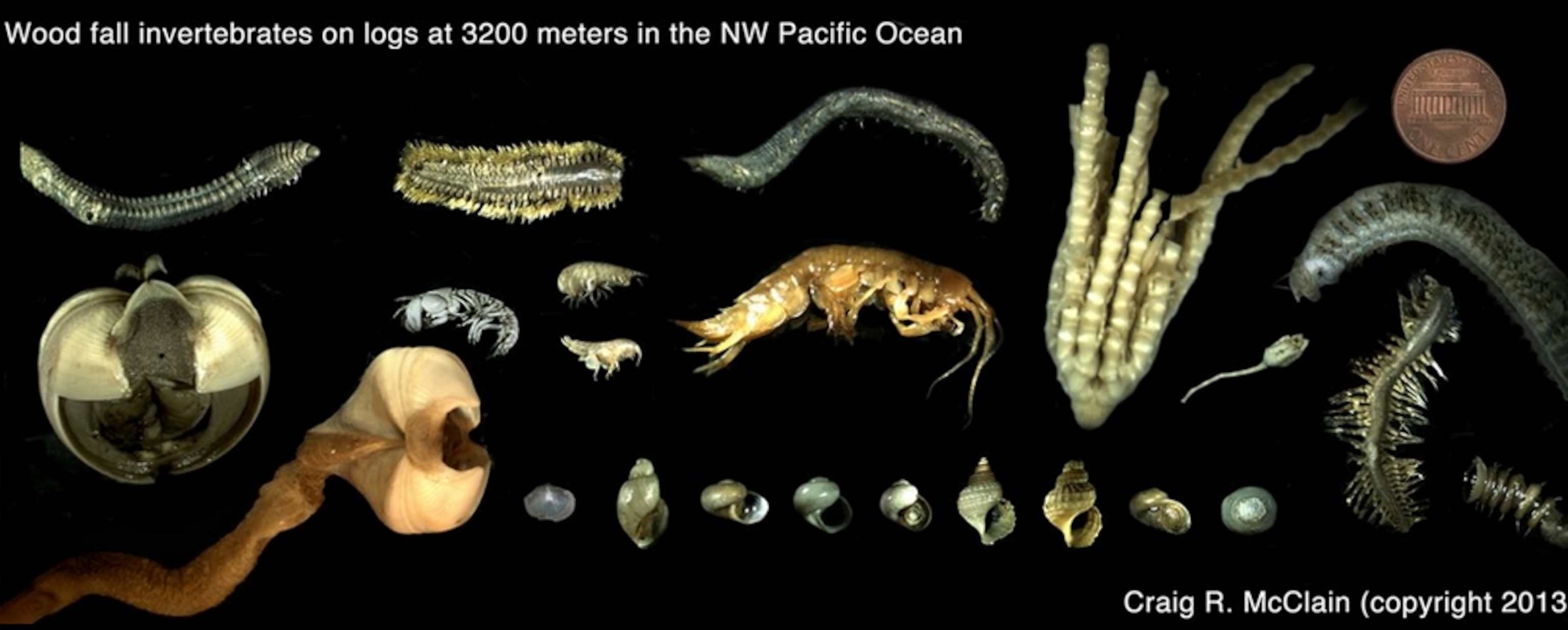
The Second World That Forms On Sunken Trees
Some of the most uncharted parts of our planet aren’t particularly hard to get to. They aren’t unreachable, like the deepest oceans or the darkest caves. They are unexplored because they are fleeting. They blink in and out of existence, appearing unpredictably and vanishing quickly.
Craig McClain, a deep-sea marine biologist and writer at Deep Sea News, studies one of these temporary worlds. They’re called woodfalls. They’re the odd bits of rotting wood that sink to the ocean floor when ships are capsized or trees are uprooted by storms. These sunken timbers provide a glut of food, and a solid surface upon which to anchor. They soon become filled and encrusted by animals—relatives of clams, lobsters, starfish, and more.
Woodfalls mean that trees get two chances to support vast webs of life—once on land and again at sea, once while alive and again while dead.
And the animals that accumulate on these sunken logs aren’t generic bottom-dwellers. If you search for them on other parts of the ocean floor, or even in the surrounding sediment, you won’t find them. They are woodfall specialists. McClain estimates that around 90 percent of these species are found on sunken wood, and nowhere else.
Most of them have adapted to eating wood. They are deep-sea animals that live only on land plants. Congratulations, evolution, you have outdone yourself.
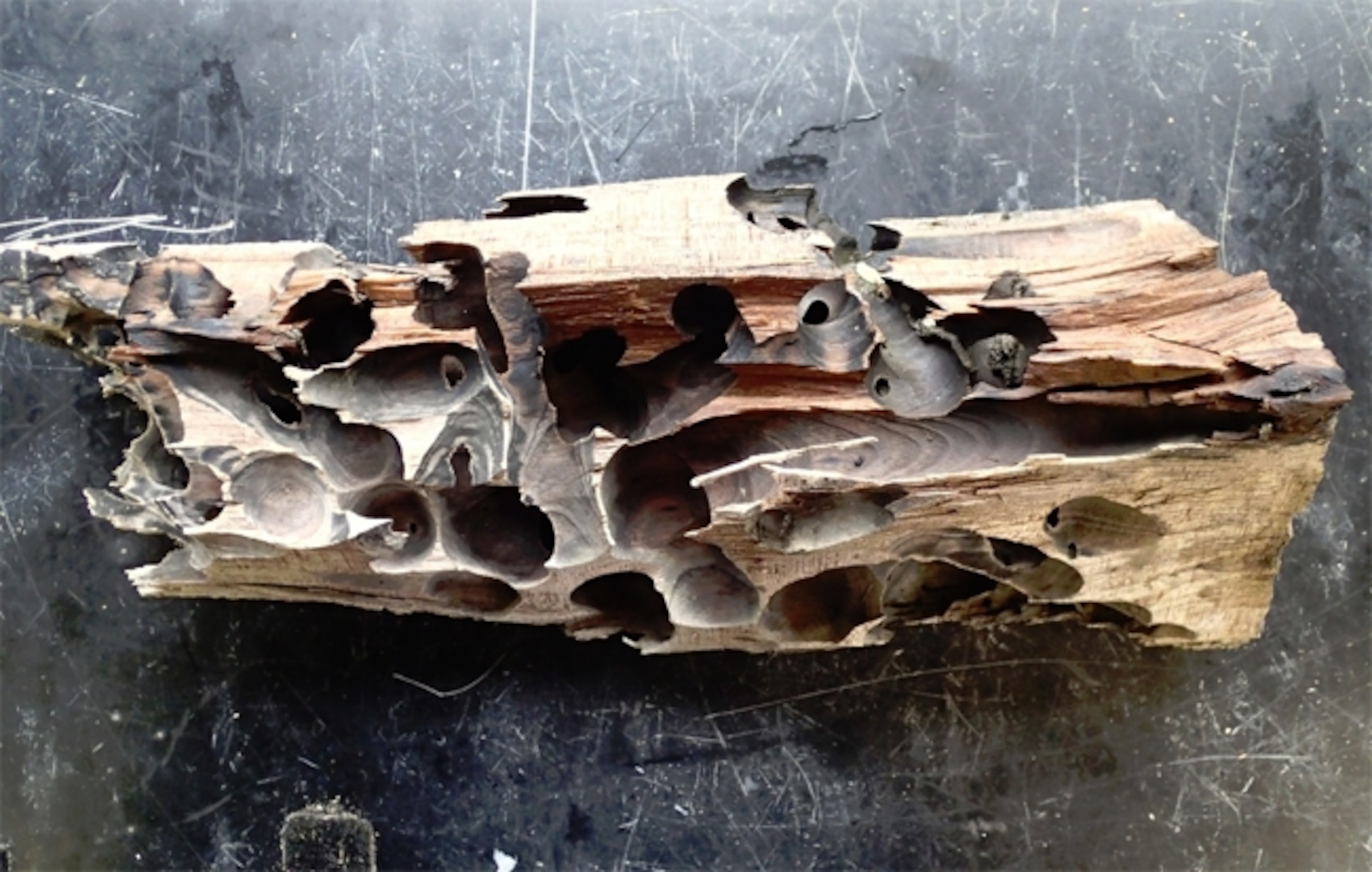
The most prominent members of the woodfall communities are clam-like creatures called Xylophaga. They arrive as larvae and grow into weird inch-long seashells. Unlike, say, clams or scallops, they are rounded rather than flattened and their two halves don’t meet properly in the middle. They use their long, muscular feet to drive their ridged shells against pieces of wood, turning themselves into living chisels. They ingest whatever splinters they carve away, and they digest these fragments with the help of bacteria on their gills.
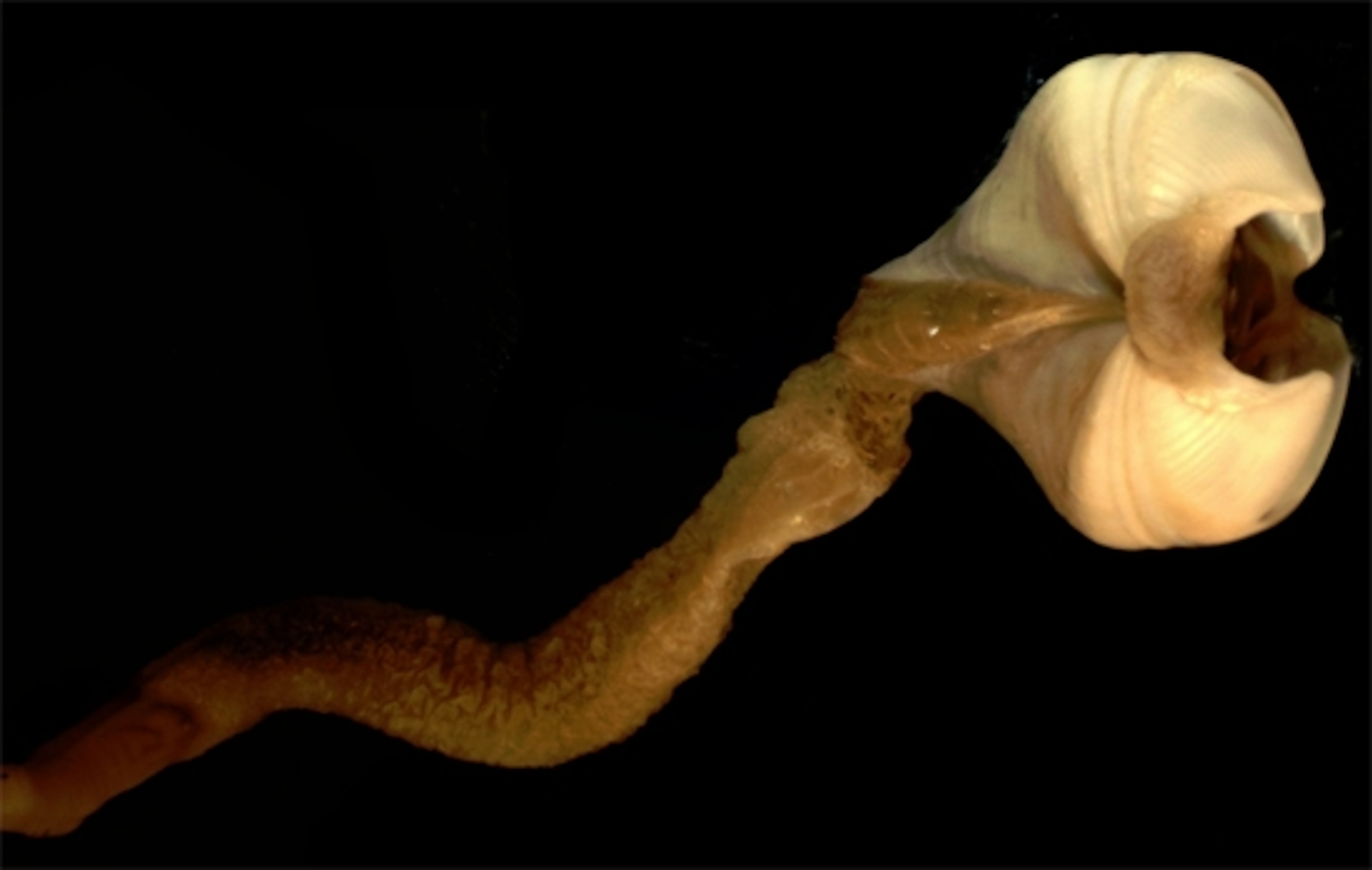
Woodfalls also harbour plenty of other life. McClain has seen 7 to 8 species of snail on a single log, some of which are new to science. Small crustaceans and predatory worms work their way through the wood. On the surface, large squat lobsters tear off strips of bark and use their spoon-shaped claws to transfer the pieces to their mouths; they too digest the wood with bacterial partners.
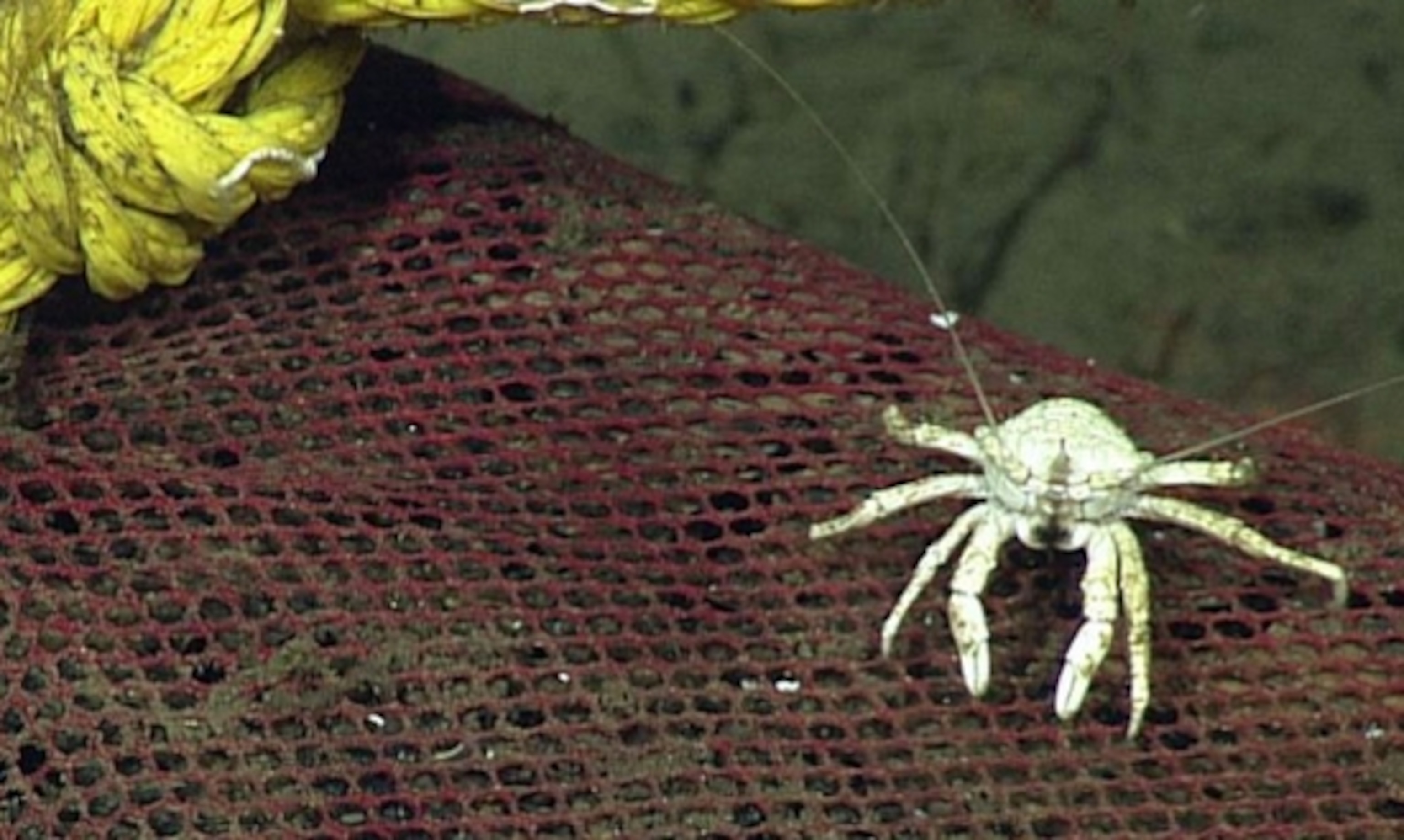
And there’s Xyloplax, the sea daisy—a gutless centimetre-long relative of starfish and sea urchins, which looks like a coaster made of spines and plates. Apart for its predilection for woodfalls, no one really knows what this bizarre creature is or does; one educated guess is that it’s a Peter Pan starfish that stopped growing early.
The undersea communities take just a few years to settle upon a fallen log. But such logs are few and far between. Storms, landslides and monsoons undoubtedly send trees into rivers and seas, but the bottom of the ocean is hardly a lumber yard.
There are other examples of temporary ocean habitats, such as whalefalls. When whales die, their enormous carcasses also sustain teeming communities of scavenging creatures, from slimy hagfishes to the bone-eating snot-flower worms. But whalefalls are huge—they’re all-you-can-eat buffets of manna from heaven. Woodfalls, on the other hand, usually come in haute cuisine-sized fragments. McClain has clocked in many hours of undersea exploration with ROVs, and has never seen a whole tree or log on the ocean floor.
So, the big question is: What are the woodfall animals doing when there’s no wood around?
“We don’t know,” says McClain. “Are there just larvae hanging around in the sediment waiting for something to land, or are there chemical cues that draw them in? I have no idea. Every explanation I can come up with doesn’t really fit. You just think: How would that actually work?”
To understand more about woodfalls, McClain has been creating them. In 2006, he sank 36 logs to the bottom of Monterey Bay in California, in a site affectionately known as Deadwood Some weighed just a few pounds; others weighed over sixty. McClain wrapped them in mesh laundry bags, lowered them 3 kilometres down onto the ocean floor with a “benthic elevator” (read: a fancy shopping trolley with weights and floats), and scattered them using a remotely-operated vehicle, or ROV (read: underwater robot assistant).
Graduate student Jenna Judge, who was involved in the experiment, sums it up plainly: “Have you ever wondered what would happen if you chucked a bunch of logs into the deep sea?
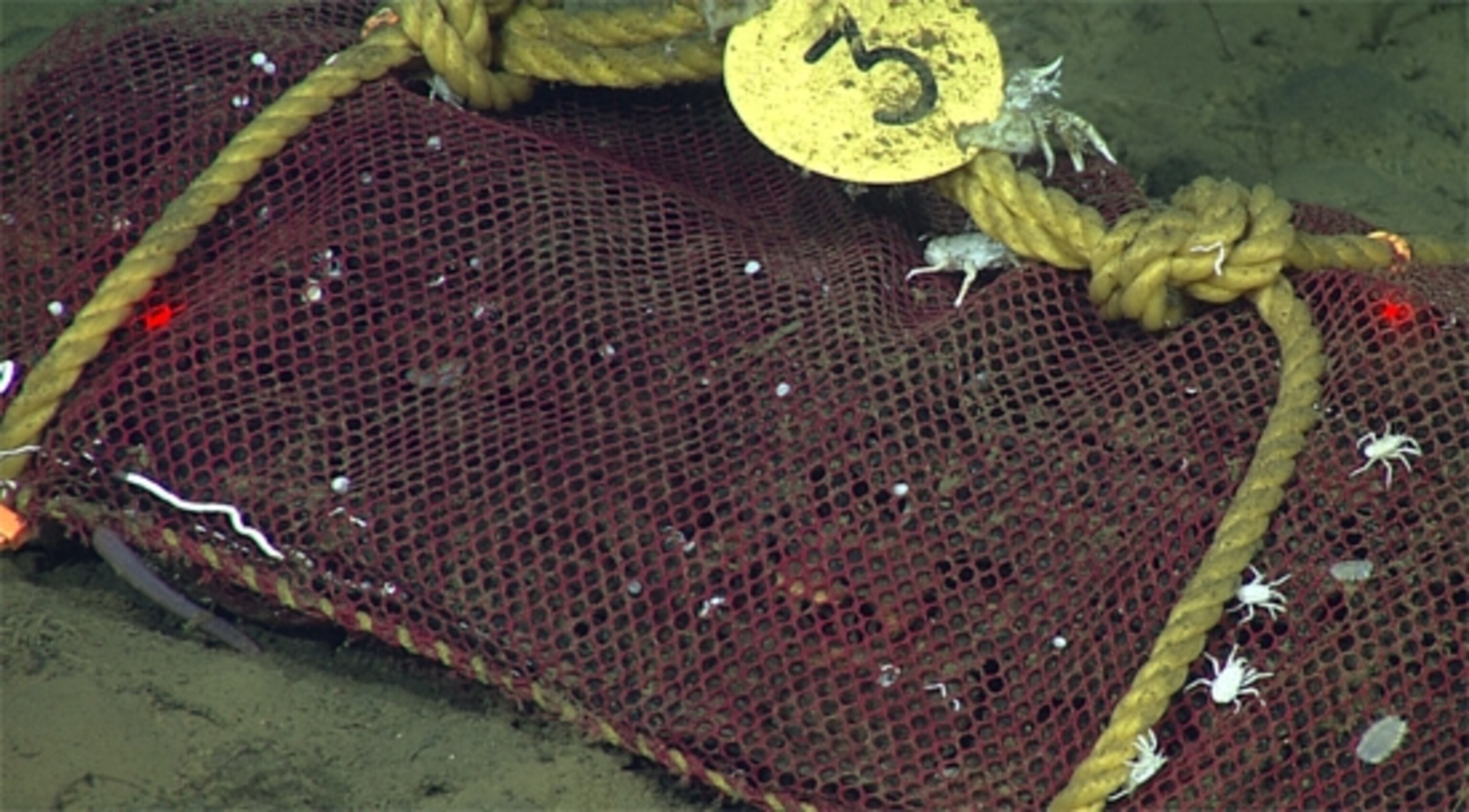
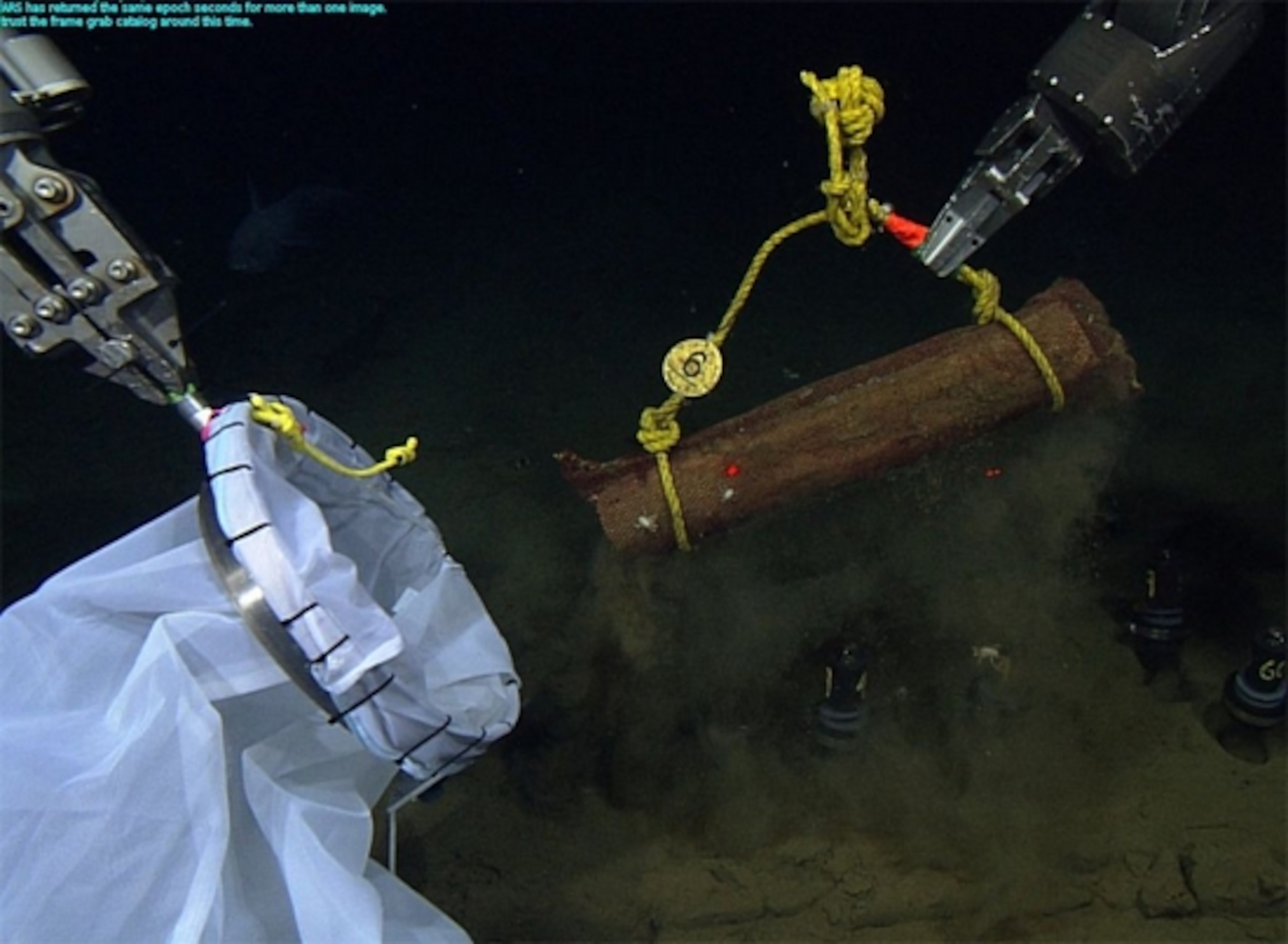
The team collected half the logs a few years back and the rest of them a month ago (live-tweeting along the way). Some are pitted with tiny holes. Others have been so heavily infiltrated by wood-eaters that they are practically falling apart. The bacteria that grow on the wood release sulphur, so the logs smell faintly of decay and rotten eggs.
Partly, the experiment was an attempt to understand how the woodfall communities change over time. But more than that, it was a chance to answer some universal questions in ecology. (Also: endless puns about “old wood”.)
Ecologists have long been interested in how biological communities arise. If you know certain things about an environment, like how much energy is available, can you predict how many species it supports, or how big they are, or what lifestyles they lead? These are pretty basic questions: what lives where, and why?
Answering them is harder. You could try to do it with microcosm experiments, where you wall off a chunk of habitat and change something within them, maybe by adding fertiliser or removing predators. But most ecosystems are so complicated that there’s always a risk that you haven’t controlled for some important factor.
In the face of this uncertainty, woodfall experiments offer unparalleled control. By sinking logs into the ocean, McClain’s team could very precisely control the amount of energy entering the ecosystem… because the logs are the ecosystems. Sinking a log is an act of world-building.
“We’ve got a really nice experimental system where we can control how much energy the community gets,” he says. “The question after that is simple: what does the community do with that energy?” Do you get bigger species? The same species with bigger bodies? More complex food webs?
McClain is analysing the data from the woodfalls, and he has already found something surprising—something odd about the way species arrived at the different logs that has confounded his expectations and left him excited. Unfortunately, he won’t say what that result is yet. Stay tuned for more.
